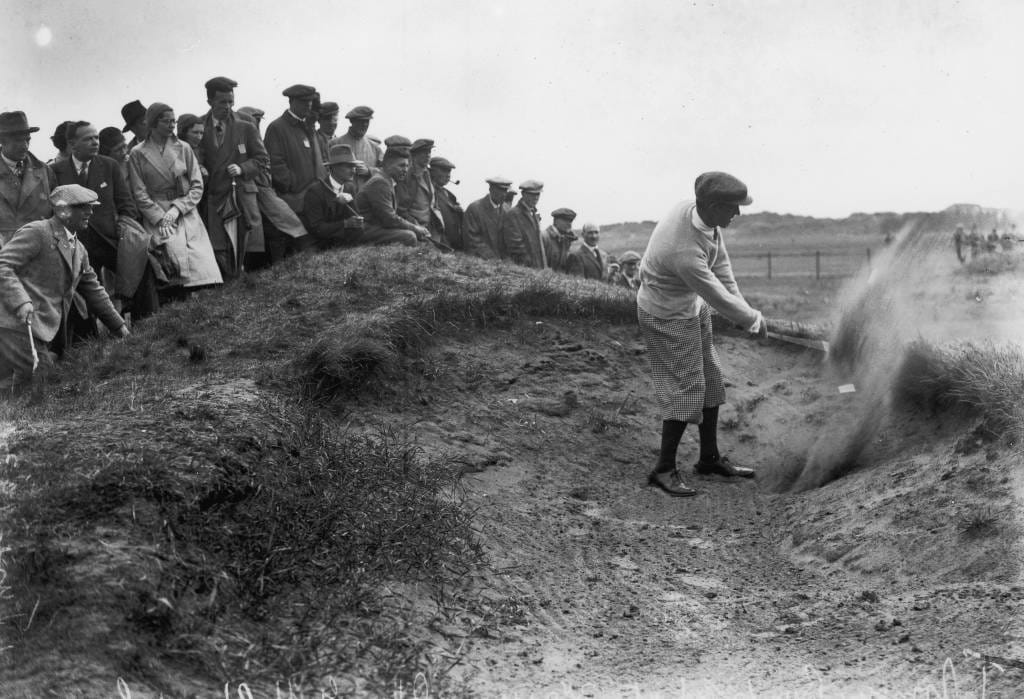Tommy Armour
The first Champion Golfer at Carnoustie

It took just ten years for Tommy Armour to go from lying in an army hospital bed with a shattered arm, a metal plate in his head and completely blind from exposure to mustard gas to winning the first of three major titles.
Few golfing greats have endured such a rollercoaster ride to the top but for the Silver Scot, his place in history is assured having won the first Open staged at Carnoustie back in 1931.
Thomas Dickson Armour was born in Edinburgh on September 24, 1896 but with his father George dying when Tommy was just four years old, it was older brother Sandy that introduced him to golf.
Fittingly, Armour – who took up playing bridge and learning the violin as a youngster, becoming highly proficient in both – would actually be on the bag when Sandy won the Scottish Amateur Championship in 1921.
Having started in the Black Watch as an 18-year-old following the outbreak of World War I, Armour became renowned as one of the fastest machine gunners in the British Army before joining the newly-created Tank Corps and rising to the rank of Staff Major.
In later years, stories of Armour single-handedly capturing a German tank and strangling the tank commander with his bare hands when he refused to surrender began to circulate but regardless of that particular tale’s veracity, his war heroics earned him an audience with King George V.
Yet, disaster struck in 1917, when his tank was shelled with mustard gas in France, leaving him completely blind and needing metal plates in his head and left arm.
As talented a golfer as he had been before the war – any future success in the sport seemed unlikely.
“I am a Scotsman but I should like it to be known that I learned my golf in the United States” Tommy Armour
A remarkable recovery
Armour gradually regained sight in his right eye but would remain blind in his left for the rest of his life – something that often caused him trouble when putting due to a lack of depth perception.
However, golf became the perfect way for him to rebuild his health and less than two years after his release, he won the 1920 French Amateur Title.
He emigrated to the USA in 1923, became a US citizen and turned professional a year later and was always proud to represent his new country – stating after his victory at Carnoustie in 1931 that “I am a Scotsman but I should like it to be known that I learned my golf in the United States.”
And in 1927, he capped his incredible recovery from the Great War by winning the US Open in an 18-hole play-off at Oakmont.
In brutal conditions in Pennsylvania, there was just a single round under par all week – Armour’s stunning, second-day 71.
On the final day, he still found himself trailing Harry Cooper, who notched a total of 301 for the week, or 13-over, and needed to play the last six holes in one under par to match the man nicknamed ‘Cocksure Cooper’ because of his brashness.
Five consecutive pars gave Armour a chance and a 250-yard drive down the middle of the 18th fairway, followed by a three iron to 11 feet and a nerveless birdie putt, forced a play-off.
In the extra 18 holes, Cooper led by two strokes through 11 but collapsed down the stretch as Armour finished strongly to take the title by three shots to the delight of a packed crowd – who had warmed to the Silver Scot’s humility.
Open glory
Armour continued to win titles and his second major came at the PGA Championship in 1930 when he beat the great Gene Sarazen 1-up in the final, with the PGA being contested as a matchplay event at that time.
The following year, he tamed Carnoustie in the first Open to be held at the Angus course by coming from five strokes behind on the final day to overhaul Jose Jurado of Argentina.
Despite a couple of close calls – most notably losing a five-shot lead at the 1933 US Open and losing 5&4 to Johnny Revolta in the 1935 PGA Championship final – Armour never won another major and was essentially semi-retired by the late 1930s.
He would go on to become a highly-regarded golf instructor, wrote the best-selling book ‘How to Play Your Best Golf All the Time’ and was elected to the PGA Hall of Fame in 1942 before being grandfathered into the World Golf Hall of Fame in 1976 – eight years after his death.
Still considered one of the greatest iron players of all-time, it was a fitting tribute for a man whose career could have been over in an army hospital bed before it began if not for his iron will.
















